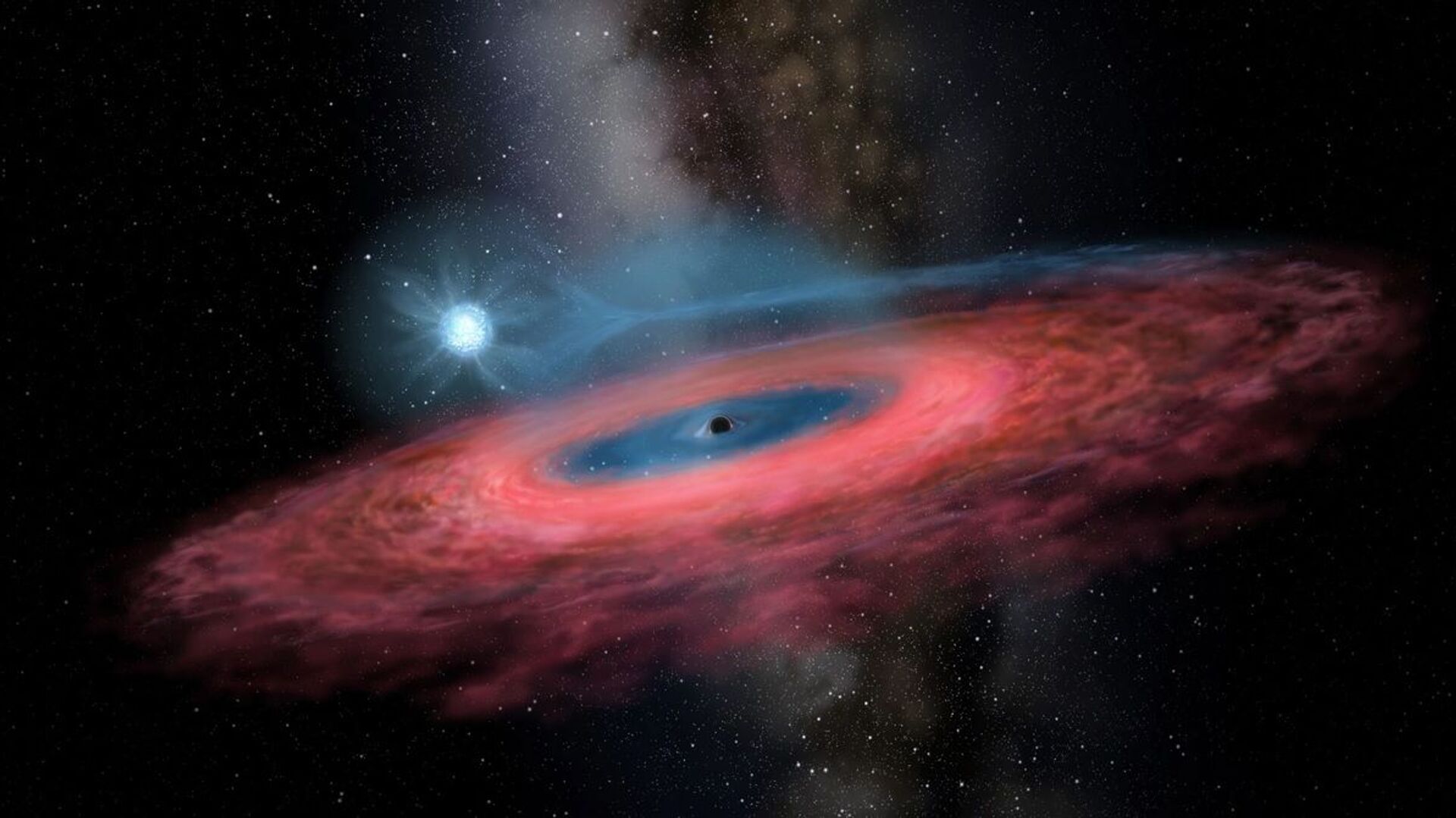Does Discovery of Black Hole Hiding in Star Cluster Outside of Our Galaxy Prove Einstein's Theory?
09:31 GMT 16.02.2022 (Updated: 19:34 GMT 03.11.2022)

© Photo : YU Jingchuan / Beijing Planetarium
Subscribe
Studying black holes enables scientists to learn more about the lives of stars – how they form and die. Yet, finding a black hole is quite a tricky task because they don't emit the same rays as most other celestial objects.
An international team of scientists have discovered a black hole hiding in a star cluster outside the Milky Way. According to the findings of their study published in the journal Monthly Notices of the Royal Astronomical Society, the celestial object named NGC 1850 BH1 is around 11 times as massive as our Sun and is located 160,000 light-years away in a neighbouring galaxy called the Large Magellanic Cloud.
Researchers write that previous stellar-mass back holes were spotted in other galaxies by "picking up the X-ray glow emitted as they swallow matter, or from the gravitational waves generated as black holes collide with one another or with neutron stars". At the same time, they noted that most stellar-mass black holes don't "give away their presence through X-rays or gravitational waves".
The team discovered the black hole using a new method – they examined how it influences the motion of a star in its vicinity.
The team discovered the black hole using a new method – they examined how it influences the motion of a star in its vicinity.
It seems the finding proves the assumption made by Albert Einstein in his theory of relativity. The German-born physicist said over a century ago that the gravitational pull of black holes is so strong that they could bend light right around them.
"Similar to Sherlock Holmes tracking down a criminal gang from their missteps, we are looking at every single star in this cluster with a magnifying glass in one hand trying to find some evidence for the presence of black holes but without seeing them directly", said Sara Saracino from the Astrophysics Research Institute of Liverpool John Moores University in the UK, who led the research.
Another thing that makes the discovery unique, scientists say, is that it's the first time a black hole was found in a young cluster of stars, which is around 100 million years old, "a blink of an eye on astronomical scales".
Researchers say using their method, astronomers can discover more black holes and shed more light on these mysterious celestial objects, such as how they evolve. New findings can also improve scientists' understanding of the origin of gravitational wave sources.
Researchers say using their method, astronomers can discover more black holes and shed more light on these mysterious celestial objects, such as how they evolve. New findings can also improve scientists' understanding of the origin of gravitational wave sources.
